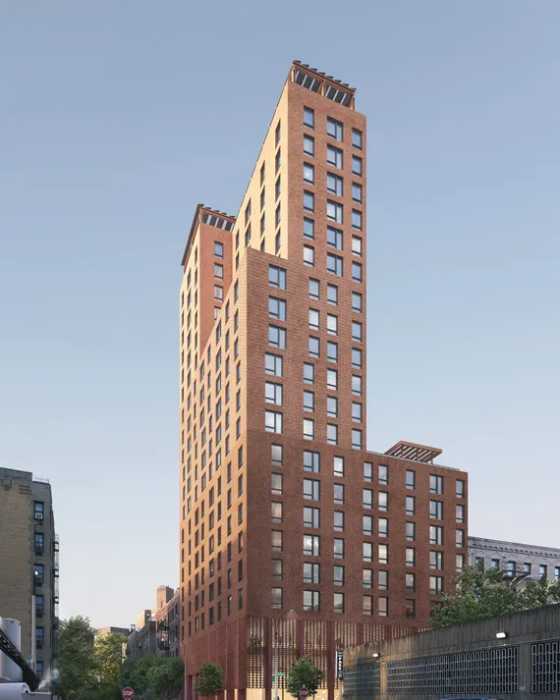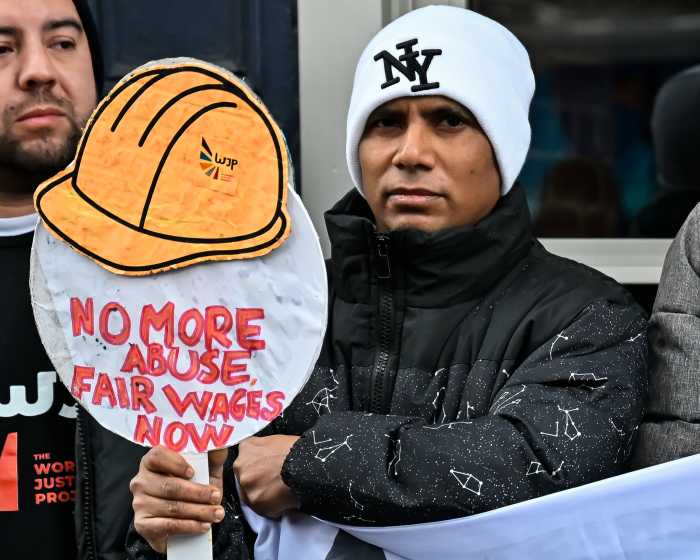Last week, I stood in front of an elevator at Penn Station and pushed the button. It’s an ordinary act for millions of New Yorkers who do this every day — myself included — but this one felt different.
For starters, it wasn’t a regular act of commuting. I was joined by fellow disability activists; representatives of Amtrak, the MTA, and the real estate developer Vornado; and a group of New York’s elected officials to cut the ribbon and officially bring the elevator into service for the 600,000 passengers who use Penn Station each day. It was the culmination of years of work and collaboration between government, the private sector, and disability advocates, which had produced a game-changing result.
Any New Yorker will tell you that they’ve dreaded traveling through Penn, given its dark, cramped, difficult labyrinth of hallways. For disabled people, the challenges were much worse. Penn’s existing elevators, hidden in poorly-lit corridors or in loading areas, were unsafe and hard to find. The new elevator is part of a renovated and expanded entrance on 32nd Street; two other new elevators are centrally located and highly visible around the station. Lighting, open space, and improved signage make it easier to figure out where to go, and the public announcement system in the entrance is audible over the noise of commuting. The area around the station is improving, too: run-down, inaccessible public plazas are getting new life with ramps near main staircases, and adaptable seating that is welcoming and comfortable.
These improvements may be aimed at disabled New Yorkers, but transform the area into a more welcoming civic space for everyone. It shows what is possible when decision-makers prioritize accessibility, and the public and private sectors work together and with advocates.
It wasn’t always this way. In 2017, I was in a subway station just a few stops from Penn, watching an older couple struggle up the stairs. I was among a few activists who had just formed the Rise and Resist Elevator Action Group, dedicated to improving subway infrastructure for disabled New Yorkers, and we were organizing our first rally. I handed the couple a flyer, which they waved away. “It’ll cost a fortune and never happen,” they said, before continuing to inch their way up to street level.
It was an unsurprising response, considering that had been the stance of the MTA for decades. Subway accessibility wasn’t a priority for anyone; the pitiful state of subway elevators only registered for many people on the rare occasion one was required. There was no public outcry — inaccessibility was part of the City’s hard edge, and those who could simply suffered through.
The Elevator Action Group was a reaction to this complacency. At first, it felt like we were shouting into a void. We organized more rallies, wrote letters and sent postcards to politicians, particularly the Governor. Several of our coalition partners and individuals from the Elevator Action Group turned to the courts, filing multiple lawsuits.
A major settlement was finalized this year, creating milestones and funding targets for the MTA to make 95% of its 350 inaccessible stations across the city accessible by 2055–a watershed moment. Board member David Jones remarked that he had “not seen advocates more effective in this regard in [his] long career in nonprofits.” It became a touchstone: the case, and our advocacy, are highlighted in a new case study in the Museum of the City of New York’s Activist New York exhibit.
Our victory was tied to decades of growing awareness of disability issues and gradual improvements from the 1990 Americans with Disabilities Act (ADA). And while the ADA has been transformational, it had major soft spots, lacking deadlines, mandates, or funding to remedy older structures, though it did establish the U.S. Access Board to develop accessible design standards.
But there is inadequate oversight of these standards, leading to embarrassing and costly missteps. Instead of more regulatory bodies, we rely on individuals, organizations, and the Department of Justice, who sue for requirements ranging from accessible pedestrian signals to ADA-compliant curb cuts. These lawsuits are drawn-out and costly, and have been the last resort for disabled activists who have tried to work with businesses and government agencies but gotten nowhere.
Now, shifting attitudes may mean accessibility is no longer an afterthought. As the MTA changed their tune, framing accessibility as a priority instead of an impossible burden, New Yorkers started to reach out to the Elevator Action Group. We heard from people who wanted an elevator at their subway station and from politicians who wanted support for accessibility improvements in their districts. After the City and the MTA implemented incentives to build elevators or easements in 2021, some private developers have asked for our input on designs, or been acutely interested in improving the accessibility of the public realm around transportation hubs.
Still, there are issues to grapple with, at Penn and system-wide. People need more convenient places to sit inside Moynihan Station, especially those without the stamina to walk long distances or stand for long periods of time. Wayfinding features like tactile guideways for people who are blind or low-vision could open up independent travel to more people, but there are no legal mandates for these features. Construction is leading to more crowding on street level, although it will ultimately yield more accessible sidewalks. And Penn is a bright spot in a still-bleak landscape: just 29% of subway stations are accessible by elevator today, compared to 70% in Chicago, and 98% in Boston. There are many other improvements we should be pursuing to make public transit accessible to all, and we are a long way from professionalizing accessibility, which could scale these benefits to other public spaces, housing, offices, schools, and healthcare facilities.
But the shift is real, and if Penn Station can be turned around, it can happen anywhere. After nearly 7 years of advocacy, it’s rewarding to see progress here and throughout the subway system. This moment demands we do even more and evolve our outlook—to see accessibility not as a costly imposition, but as an opportunity to build things right from the beginning, and a way to make the city better for all.
Jessica Murray is a researcher, activist, and chair of the MTA’s Advisory Committee on Transit Accessibility






































